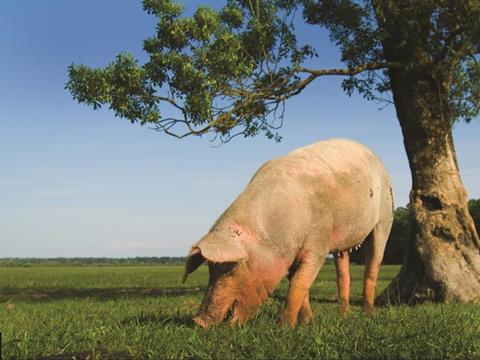Pig prices have returned to what has been described as a more “normal” seasonal pattern in 2017, according to Iain Macdonald, senior economics analyst with Quality Meat Scotland (QMS).

Having opened the year at 151.2p/kg deadweight tonnage (dwt), the Standard Pig Price (SPP) cooled slightly through January and February, before turning in March and rising strongly through the spring, adding an average of 0.9p/kg each week.
As July drew to a close, the SPP traded 9% higher than its 2017 opening level, at 164.8p/kg dwt.
Macdonald commented: “While the year-on-year premium has narrowed significantly, as prices had continued to climb steadily through the second half of 2016, the SPP closed August up 18.5% on last year.”
He also added that the recent downwards pressure points to a well-supplied markets and this is reflected in spot pig prices, a key industry barometer, which are reported to have fallen back below contract prices in recent weeks.
He explained: “One seasonal factor underpinning pigmeat supplies in recent weeks has been an upturn in slaughter numbers,” observed Macdonald.
“Defra slaughter statistics for the UK indicate that weekly average prime pig slaughterings rose by 3-4% between July and August in 2015 and 2016. Data from price-reporting GB abattoirs suggests this was the case again this year, though the month-on-month increase may have been slower at 1-1.5%.”
In addition to increased availability of pigs for slaughter, carcase weights, he said, tend to rebound by 1% - 1.5% in August after slumping to their lowest level of the year in July.
What’s more, at GB price-reporting abattoirs, carcase weights rose by around 1% between July and August, which, when added to the increase in slaughter, it indicates that weekly prime pigmeat production volumes rose by just over 2% between July and August.
As a consequence of the upturn in carcase weights, the average price paid by GB processors for a standard carcase has continued to edge higher, and, with carcase weights also running above 2016 levels, this was up by nearly 21% on a year earlier.
In Europe, farmgate prices rose strongly through the spring, peaking in June at 15-20% higher than they had begun the year, before cooling by 5% in July and steadying in August.
This story was originally published on a previous version of the Meat Management website and so there may be some missing images and formatting issues.












